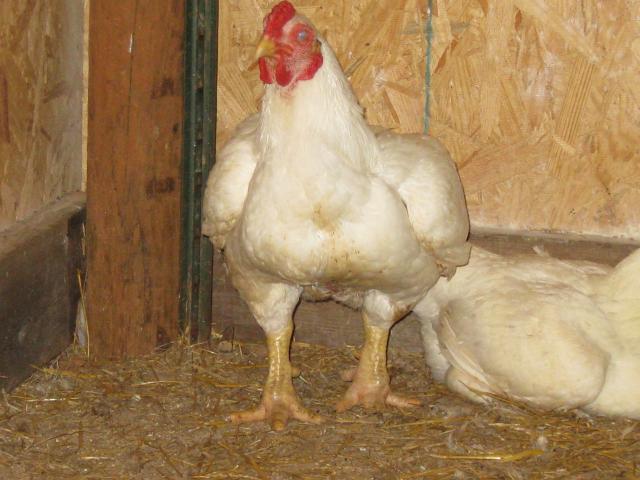Quote:
I made that joke because I spent over a year trying to find someone willing to sell either a White or White Laced Red Cornish; and settled for someone willing to part with two Dark Cornish cockerals. During that time, I discovered most large fowl Cornish breeders will not sell birds to a common Joe like myself; and true White Cornish are very difficult to find................. and those few who have them will not sell.
Well Steve That perception is true unfortunately, but maybe I can shed some light on that. back in the 30's through the 50's Cornish were King in the chicken world, then in the 50's the big production co. bought every single decent flock they could find and find them they did. This was part of their plan once the Cornish cross was bred and introduced to the world as the new way to buy chicken. The big co. did not want any other cornish out there at all in the country to have to compete with. They used some very unscruplous tactics to aquire flocks and paid some very exorbanant prices to boot, some small flock guy's managed to stay hidden from these preditor company's. Allot of the old timers are still very wary of anybody wanting or inquiring to buy good cornish birds, because it has folklore. So what now has happened is those few good birds that are out there cost a king's ransom and the average joe won't / will never spend that kind of cash for a bird he just want's to cross with and play around with assorted out breeding projects. It takes many years to break into that circle so that those breeders know those buyers will keep the breed true and continue to breed to improve them and their numbers. As many of you know it took me several years getting into that circle and finally aquiring my show quality Standard white Cornish, and yes I did pay a stupid high price for them LOL but I wanted them for the right reasons. But I have kept them true and am still breeding for quality, Dark Cornish are easy to find SQ in darks not so much, as is the case for White laced red's. These two will breed pretty easily but the whites in the current standard are very very difficult without having to resort to AI.
I have been asked more times than I care to say about people wanting birds, most are those project folks. These are so hard to breed to good quality that it hurts to sell them to folks who may or may not either have them in a year or the skills to raise them as they do take more care than the average person has the ability to. We as White & WLR Cornish breeders do also only sell adult birds, no hatching egg's or chicks, this is because it takes in upwards of 1 yr - 18 mo to be able to judge the quality of these birds because of their slow growth to maturity. Once you get to a certain high level and are known in the Cornish world to have good birds then only the serious show people seek you out and don't blink an eye over the high prices.
As an example I sell adult birds over 6mo old when I have enough, and this is the first year where I have been in the postion to have enough to sell next year as adults breeders. I sell adult Roosters for $150.00+ ea and $100.00+ for hen's for good SQ stock. If I have some exceptional ones and someone really wants them the price is even much higher. last year someone offered me $500.00 for the hulk and I was so adament about not selling he never counter offered, but he said he would have went to a $1000.00 if he thought I would sell him LOL. A good standard white can return that money 10 fold in a year with just a few good hatches, so the market for great Cornish is very limited. Breeding such an Iconic and challenging breed is the reason I stuck it out and went with my Cornish, I felt the need to offer this bit of info to Ya'll because you are all such good folks and seem truely interested. So there you have it in a nutshell, the steamy story of why good Cornish are next to impossible to find. For the sake of sanity we will not discuss the evil Hatchery Cornish and how they have ruined the breed !!!.
AL
I will leave you with this my friends. Commonly refered to as the HULK !!!!
https://www.backyardchickens.com/forum/uploads/10364_img_0378.jpg
I abhor many of the practices of big business; but give credit to the likes of the Vantress brothers, who developed larger, faster growing strains of pure Cornish, very capable of live breeding and viable egg production, before and during the developement of the first CXs. It seems ironic that those who claim to be lovers of the breed and determined to save it, have bred it into the low-rider show freak, nearing extinction, and too often incapable of live breeding. Perhaps for $500 per bird, its worth the search for a feed formula that will coax a few viable sperm cells from a roo, and the time spent rubbing chicken bellies to get a few seed planted for the next generation.






